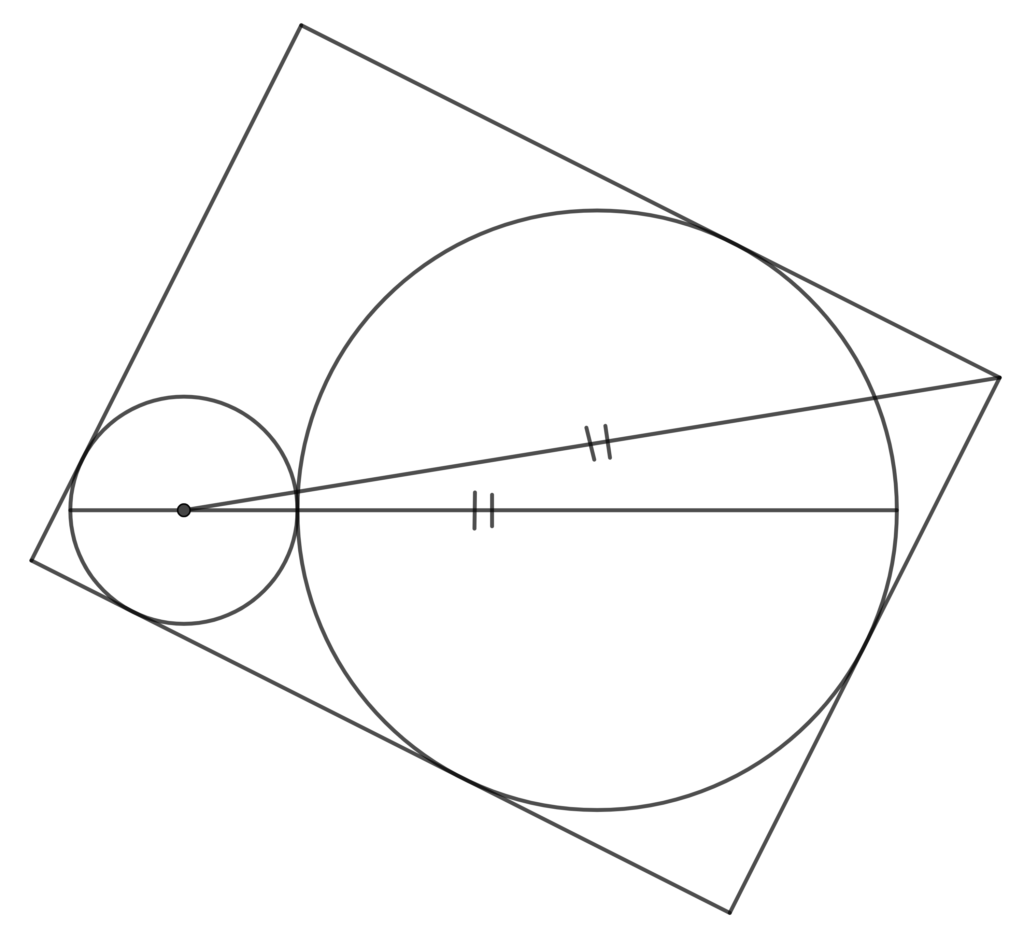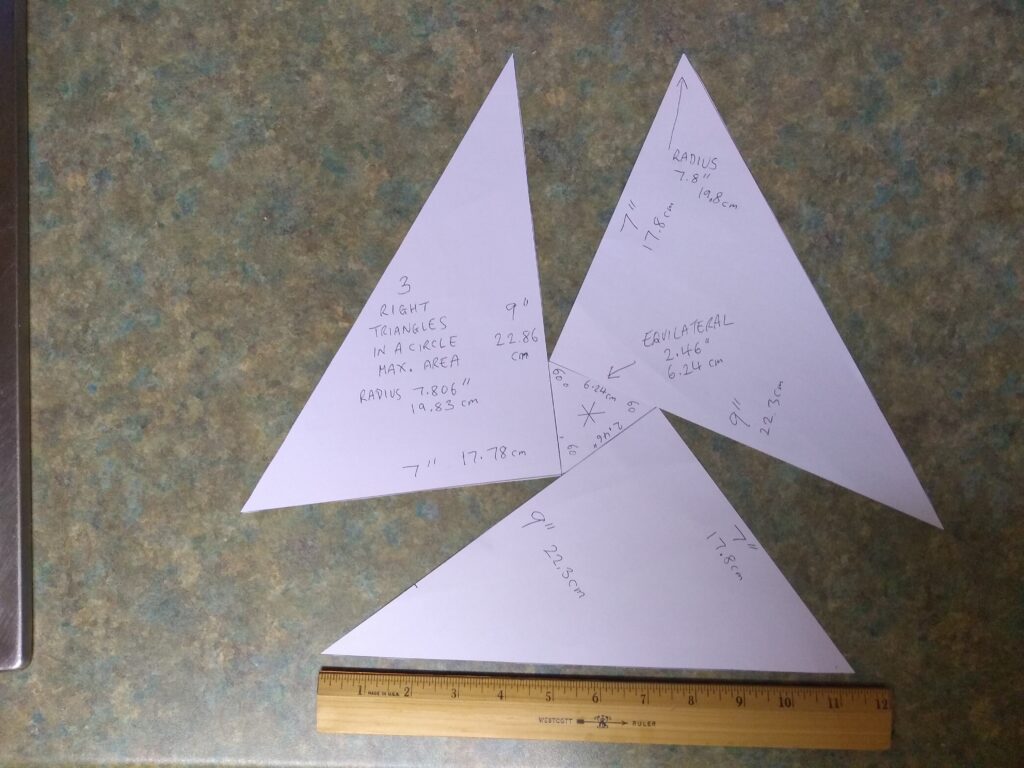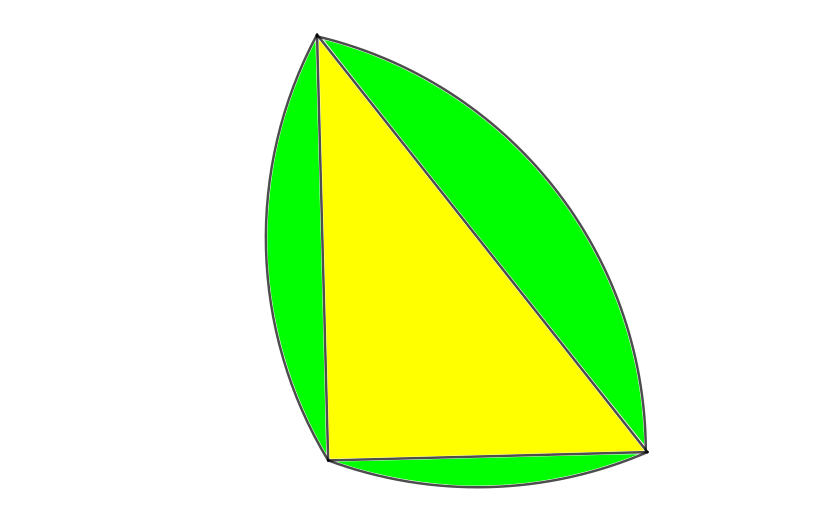Two mutually tangential circles are contained within a rectangle. The small circle is tangent to two sides of the rectangle, and the large circle is tangent to three of the sides. The distance from the centre of the small circle to the opposite corner of the rectangle is equal to the sum of the diameters of the two circles. Assume that the radius of the small circle is 1. Can you develop an equation in its simplest form that, when solved, provides the exact value of the radius of the large circle? Note that solving this equation is a difficult exercise best suited for a computer algebra system. Note also that the dimensions of the rectangle are a consequence of the construction rather than being a constraint. Thanks are due to Ed Staples who worked with me on this problem, and to Paul Turner who found a succinct solution. You can find their website, with a variety of mathematical puzzles and tutorials, at https://www.mathematicalwhetstones.com/





